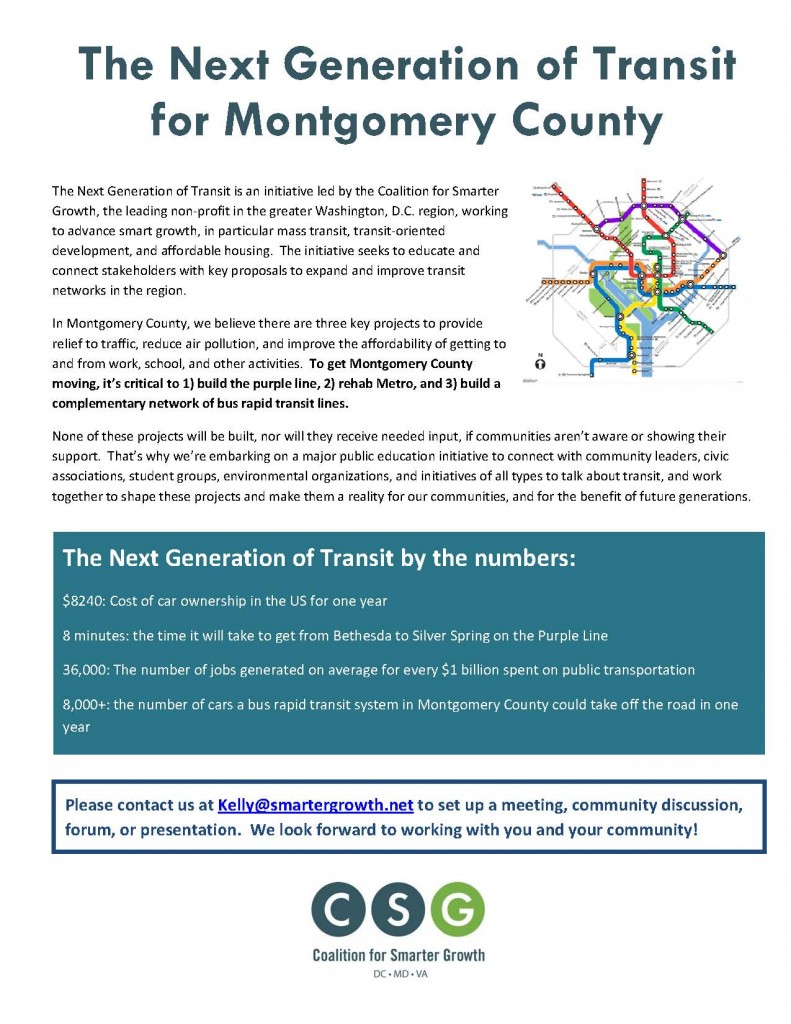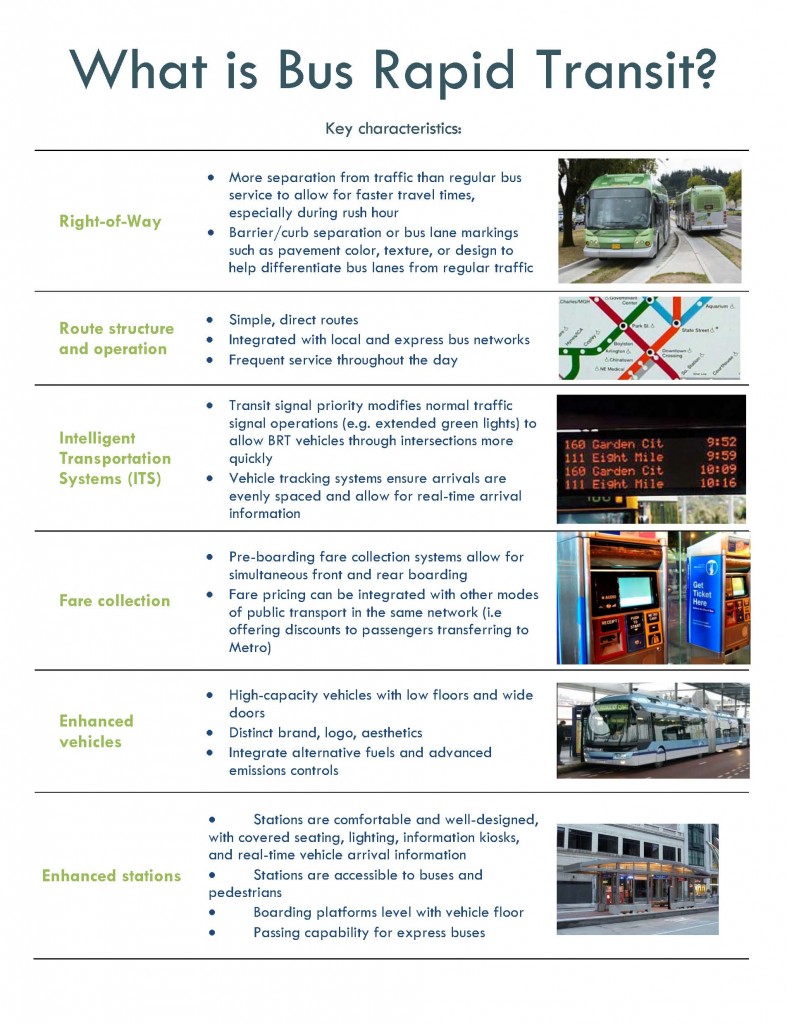Montgomery County is implementing a Smart Growth Initiative to build on the area’s strengths in biotechnology and health care in a way that will create mixed-use neighborhoods and walkable new housing developments.
The three places where most of this new construction will occur are the Greater Seneca Science Corridor along Route 28, the White Oak Science Gateway west of Gaithersburg and the White Flint expansion along Rockville Pike. Each project possesses the core elements of walkability, rapid transit options and mixed-use development.
“Montgomery County has made it a point to invest in transit-oriented communities, and the most successful were Bethesda and Silver Spring. In the future, it will be Shady Grove, Rockville and White Flint,” said Stewart Schwartz, executive director of the Coalition for Smarter Growth.
He said the market demand is very strong for development of mixed-use communities around transit. “It’s much stronger than for traditional suburban development,” he added.
Bonnie Casper, the 2012 president of the Greater Capital Area Association of Realtors, said smart growth is the next generation of development after the superfund trend, which involved taking contaminated sites and redeveloping them through mixed-use development to bring commercial and residential areas back to life.
“Smart growth is an extension of that, taking compact urban centers and turning them back into viable areas around transit nodes to avoid the sprawl,” she said. “More urbanized places like Bethesda, Rockville, Kensington, where the population has grown dramatically.”
The Montgomery County Planning Department’s website shows the Greater Seneca Science Corridor along Route 28 includes a major hospital, academic institutions, such as Johns Hopkins University, and private biotechnology companies. It will offer an array of services and amenities for residents, workers and visitors, including connecting destinations by paths and trails and providing opportunities for a range of outdoor experiences.
“There are 60,000 new jobs slated as part of the Shady Grove and Hopkins sites and new housing that will come into the area,” Casper said. “The key is the rapid transit system. It will cost $2 billion to expand the transit nodes to develop a 160-mile system of modern buses that look like subway cars.”
The White Flint project will enhance and expand development that has already occurred along Wisconsin Avenue and Rockville Pike.
“Retail and mixed business are already there, and it will be revamped into more of a mini town center,” Casper said. “There will be condos and townhomes of various sizes.”
The plan calls for 375-square-foot condos with Murphy beds that are the size of a hotel room.
“It’s based on the theory that younger or single people or oven older people will spend less time in their homes,” Casper said. “They will be in the local coffee shop, going to the movies and sitting out on the bench. Kids who have first jobs will be able to afford these.”
Bethesda is undergoing a huge expansion upward, she noted, and there is a tremendous amount of development to feed the needs of the area. A new Harris Teeter is going in, and Casper said it will have a very different look in the future.
Bordered by Route 29, Cherry Hill Road, New Hampshire Avenue and the Prince George’s County line, the White Oak Science Gateway is focused on developing options for a new research and technology node that capitalizes on the growing presence of the U.S. Food and Drug Administration and is complemented by mixed-use development.
“White Oak is where the FDA is, and it was developed a while ago,” Casper said. “That’s another area slated for expansion with additional research facilities and also commercial development — not just roads to jobs but mixed-use development.”
Schwartz and Casper agreed there is a critical need to fund Metro’s Purple Line to Silver Spring and Bethesda.
“We need to continue to fund the rehab of our Metro systems and to tie these traditional transit corridors to development,” Schwartz said. “The real news is that the Washington, D.C., region is beginning to lead the nation in offering effective alternatives and personal solutions to congestion — well-planned, walkable, and transit-oriented neighborhoods and centers.”








